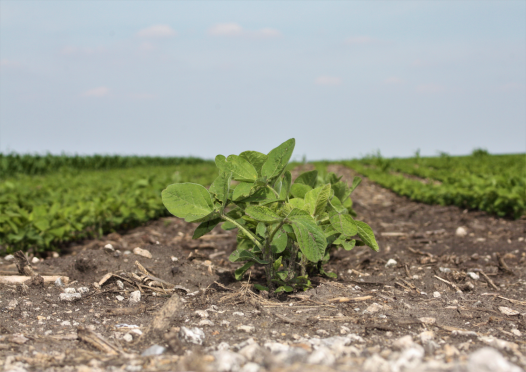Spring is in the air! The grass is greening up, the songbirds are back serenading us, each day is getting longer, the daily temperature is sort of warming up, and snow is changing to rain (for the most part). But that is the problem, isn’t it? Temps are staying lower than average, and the precipitation does not seem to want to stay away for longer than a 48-hour stretch, at best. In Champaign, the average temperature for the month of April so... Read More →
ILSOYADVISOR POST
What's New in Weed Science?
December 31, 2018
The North Central Weed Science Society recently held its annual meeting, enabling university and industry researchers to present new data covering a host of topics. I can summarize my learnings from this meeting as good and bad news for soybean producers.
First with the bad: The answer to why we continue to see large off-target movement events of dicamba remains convoluted. However, there is a sense that temperature inversions play a larger role than previously thought. Inversions have been understudied largely because there was little practical significance—until now.
Work presented from the University of Missouri, in conjunction with several universities throughout the soybean producing areas, indicates that inversions occurred on 43% of the evenings throughout June and July. Inversions began as early as 4:15 PM and 3:50 PM in June and July, respectively. This work revealed sites less than five miles apart can differ in their inversion potential based on topography, possibly due to the formation of “air drainage flows” which would increase the risk of off-target dicamba movement. As research in this perplexing area expands, it will enable applicators to make more informed decisions based on when an inversion may be present and improve inversion predicting capability by smartphone spray apps.
Weed resistance to herbicides continues to spread—both in the form of new weeds evolving resistance for the first time and in the form of certain weed species evolving resistance to multiple herbicide sites-of-action. Most notable to me was a report from the University of Illinois documenting waterhemp with increased tolerance to group 15 herbicides (e.g., S-metolachlor, acetochlor, dimethenamid-P and pyroxasulfone). This is extremely worrisome as this group of herbicides has become a staple in weed management programs due to their effectiveness on waterhemp resistant to other herbicide sites-of-action.
Now for the good: Headway continues to be made on better understanding the genetic basis of herbicide resistance in weeds and knowledge of such information may someday allow herbicides to be tailored to exploit certain herbicide resistance mechanisms.
A new group 14 herbicide, trifludimoxazin, is being developed by BASF and research from Purdue University indicates it is highly effective at controlling waterhemp resistant to other group 14 herbicides (e.g., fomesafen and lactofen) applied POST. BASF has not indicated when (if) to expect commercialization of this herbicide.
Several companies provided updates on their product offerings. Those relevant to soybean producers:
Available 2019
- Authority® Supreme (FMC): Product shortage 2018, expect full launch 2019
- Interline® (UPI): Single use-rate increased to 43 fl oz/ac
- Intermoc™ (UPI): New premix of glufosinate + S-metolachlor
- Fierce® (Valent): New liquid formulation
- Fierce® MTZ (Valent): New packaging as a premix and no longer a co-pack
Expected 2019—2020
- Engenia® PRO (BASF): New premix of dicamba + pyroxasulfone
- Gramoxone Magnum™ (Syngenta): New premix of paraquat + S-metolachlor
- Tavium® Plus VaporGrip® Technology (Syngenta): New premix of dicamba + S-metolachlor
Abstracts from the meeting will be available at: http://ncwss.org/publications/.





Comments
Add new comment